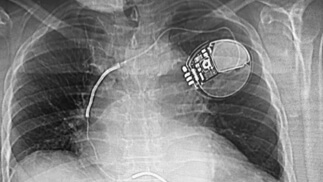<< View SCS Blog
Best Implantable Device Coating

Implantable devices place a special set of requirements and challenges on their coatings. The moisture and broad mixture of chemistries inside the body present difficult and sometimes harsh environments for long-term material survival and performance. Coatings not only need to survive and perform appropriately, they additionally need to remain non-irritating and inert enough to be harmless to tissues they contact. For most applications, the best choice are the biocompatible Parylene coatings.
USP Class VI Certification
The most important factor in finding the best implantable coating is to confirm that it is recognized by the industry for its biocompatibility. One of the industry’s go-to standards is the United States Pharmacopeia’s Class VI certification, which is typically also covered by products that also comply with the International Standards Organization’s (ISO) 10993 standard.
To achieve Class VI certification, three types of testing must be successfully completed. These are systemic toxicity, intracutaneous reactivity and implantation.
A coating material starts by proving itself to be inert by means of testing for a reaction after extract injection into the body of a test animal. Extract solutions are prepared with four different carriers — saline solution, alcohol saline, vegetable oil and polyethylene glycol — and, as appropriate, injected either intravenously or into a body cavity (intraperitoneally). Each test subject is observed at intervals over the course of three days for appearance, behavior, body weight and mortality and compared to control subjects. Clinical observations determine the pass/fail of the systemic toxicity test.
Intracutaneous reactivity testing is completed using same extract carriers and injected into multiple sites of the test animal. Observations are made for erythema and edema at prescribed intervals for three days, scored by what is known as the Primary Irritation Index.
The final test required for USP certification is implantation. Coated test articles are implanted into test animals with observations made with respect to animal appearance, behavior and weight over the course of the 5-day implant duration. Implant sites and muscle tissue are then evaluated both macroscopically and microscopically, with capsule formation or other signs of irritation recorded with the use of a Reaction Index that can be compared to values obtained from control subjects.
A coating that has its biocompatibility certification in place has two key benefits. Once tested and recognized as bicompatible, time can be saved from expensive delays. In addition, the certification provides a sense of assurance that it is an appropriate choice for your implantable device or item.
Parylene Coating for Implantable Devices
Parylene remains a gold standard for conformal coatings and is often the best option for implantable devices. On just about every metric, it perfectly suits the needs of biological applications. Its USP Class VI certification also means that it is safe to use.
Unlike most other coating options, Parylene’s chemical inertness is a key benefit, as it resists both the acids and bases that are typically encountered when implanted. It also has excellent resistance to moisture and to corrosive materials — like salt. While it is unlikely to encounter industrial solvents when implanted, it can also withstand a full range of organic chemicals.
The unique mechanism of Parylene adhesion also makes it a good choice in implantable devices. By nature of the physics of the long-chain growth and polymeric matrix, it forms an impenetrable seal around implantable devices, protecting them from the body and the body from them.
Vapor based deposition means that a Parylene coating is more truly conformal than that created by most other compounds. Since Parylene coats every part of a device, it covers exposed surfaces underneath parts and even areas inside of the item that are not otherwise covered. Parylene is a preferred option since bodily fluids can behave similarly, permeating many of those cracks or flaws.
Parylene coatings aren’t just truly conformal, they are also unique in their ability to create a truly conformal coating in thicknesses that are measured in microns. While other coatings can approach Parylene’s performance, they typically are anywhere from 10x to hundreds of times thicker when applied.
Given that size is often a concern in implantable device, Parylene’s thinness is another significant benefit.
Parylene has a high degree of lubricity — similar to PTFE, making it an excellent match for implantable devices since it reduces the risk of irritation or inflammation when the device is positioned. In fact, many needles are coated with Parylene to make injections both easier and potentially less painful.

